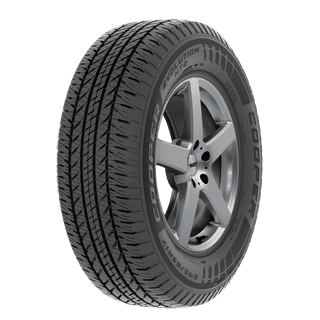Tire Service: Comprehending Tire Stress Surveillance Equipments
Comprehending Tire Pressure Monitoring Equipments (TPMS) is a crucial aspect of keeping ideal car performance and safety when driving. With improvements in vehicle modern technology, TPMS has ended up being a conventional attribute in modern-day cars, offering real-time information on tire stress degrees. Digging much deeper into the complexities of TPMS, one can uncover the different components that compose this system and the importance of each in making certain exact monitoring. From straight to indirect TPMS systems, the landscape of tire pressure surveillance varies, each with its unique set of factors to consider and benefits. Keep tuned to decipher the intricacies of TPMS, from maintenance pointers to the undeniable benefits of keeping your tires effectively pumped up. mopar tire service specials.

Significance of TPMS
The value of Tire Pressure Tracking Equipments (TPMS) lies in their capability to boost vehicle security and performance with real-time surveillance of tire pressure levels. Preserving the proper tire pressure is critical for guaranteeing optimal handling, stopping, and general safety and security of a lorry. TPMS provides motorists with immediate feedback on any underinflated or overinflated tires, enabling for prompt adjustments to be made.
Parts of TPMS
Consisting of numerous necessary elements, a Tire Stress Tracking System (TPMS) functions as an innovative security feature in modern-day cars. The main parts of a TPMS include sensing units, a control module, and a warning sign. Sensors are commonly situated in the tire valve stem or connected to the wheel assembly, where they determine tire stress and transfer information to the control module. The control component processes this details and sets off a warning if it finds considerably reduced pressure in any of the tires. The caution indicator, usually a symbol on the dashboard, signals the chauffeur to examine the damaged tire or tires. Some advanced TPMS designs additionally display the actual tire stress analyses for every tire, giving chauffeurs with real-time details to ensure ideal tire efficiency and safety. By monitoring tire stress continuously, TPMS aids avoid accidents, lowers tire wear, and enhances gas effectiveness, making it an essential part for lorry safety and performance.
Sorts Of TPMS

On the various other hand, indirect TPMS relies on the vehicle's wheel speed sensing units to monitor tire stress. This system discovers underinflation by comparing the rotational rates of the wheels. Indirect TPMS is less expensive than straight TPMS, as it uses existing sensing units within the car.
While straight TPMS offers a lot more accurate analyses, indirect TPMS is less complex in style and typically requires much less maintenance. Both systems have their constraints and advantages, and the option in between them commonly depends on factors such as expense, car make, and individual preference. Recognizing the distinctions between these 2 sorts of TPMS can help lorry owners make notified choices concerning tire upkeep and safety.
TPMS Maintenance Tips
Reliable maintenance of TPMS is vital for ensuring optimum performance and security of your vehicle. On a regular basis examining the TPMS sensing units for any damages or corrosion is critical. Guarantee that the sensing units are cost-free and clean from particles that could hinder their performance. Additionally, it is recommended to inspect the sensing unit batteries regularly and replace them as required to guarantee exact readings. Conduct routine look at the tire stress levels and contrast them with the TPMS readings to ensure they are constant. If there are any kind of discrepancies, rectify the system adhering to the supplier's standards. Throughout tire rotation or replacement, make certain that the TPMS parts are managed thoroughly to avoid any possible damages. Finally, if the TPMS alerting light illuminates on the dashboard, address the concern without delay by examining the tire stress and the general system for any faults. By sticking to these upkeep pointers, you can lengthen the life-span of your TPMS and boost the safety and security of your driving experience.
Benefits of Appropriate Tire Pressure
Preserving proper tire pressure, as stressed in TPMS Upkeep Tips, is vital for reaping the numerous advantages connected with optimal tire check over here stress levels. One of the key benefits of maintaining the correct tire stress is boosted gas efficiency. When tires are appropriately blown up, there is less rolling resistance, causing much better fuel economic climate. In addition, correct tire stress guarantees also tire wear, expanding the life-span of the tires and advertising safer driving conditions. With the ideal tire stress, lorries also have much better handling and grip, specifically in damaging climate condition. This can enhance general driving efficiency and safety and security for the motorist and passengers. Maintaining ideal tire pressure can contribute to a smoother and much more comfy experience by reducing resonances and sound caused by underinflated tires. Finally, the benefits of appropriate tire stress exceed just tire longevity; they incorporate improved fuel effectiveness, enhanced security, far better automobile performance, and general driving comfort.
Final Thought
Finally, understanding tire pressure surveillance systems (TPMS) is vital for preserving optimum tire pressure and making certain vehicle safety and security. By recognizing the relevance of TPMS, being familiar with its parts, understanding the various types readily available, adhering to correct maintenance suggestions, and understanding the benefits of keeping proper tire stress, drivers can improve their click for more info driving experience and prolong the life expectancy of their tires. Correct tire pressure is vital to safe and reliable car procedure.
